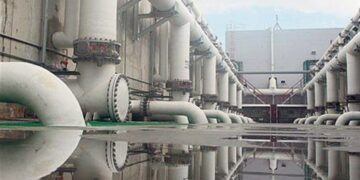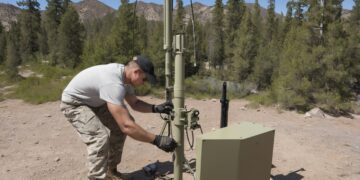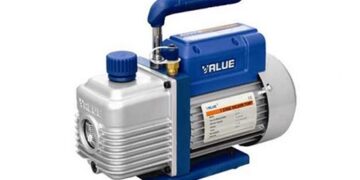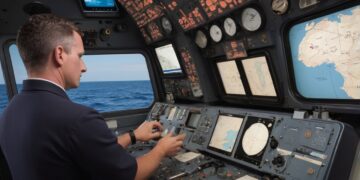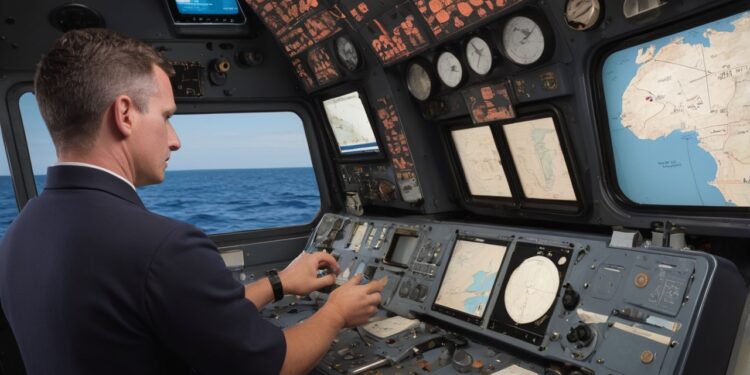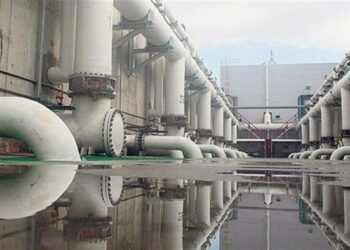Marine & Maritime Communication Solutions In the vast and unpredictable expanse of the ocean, safety is paramount for all those who venture onto the water. Whether it’s a commercial cargo ship, a fishing vessel, or a recreational boat, the ability to communicate effectively can mean the difference between life and death in emergencies. Modern marine radios have revolutionized maritime communication, providing essential tools for enhancing safety at sea. Marine & Maritime Communication Solutions This blog delves into how these advanced communication devices improve safety, exploring their features, functionalities, and the critical role they play in maritime operations.
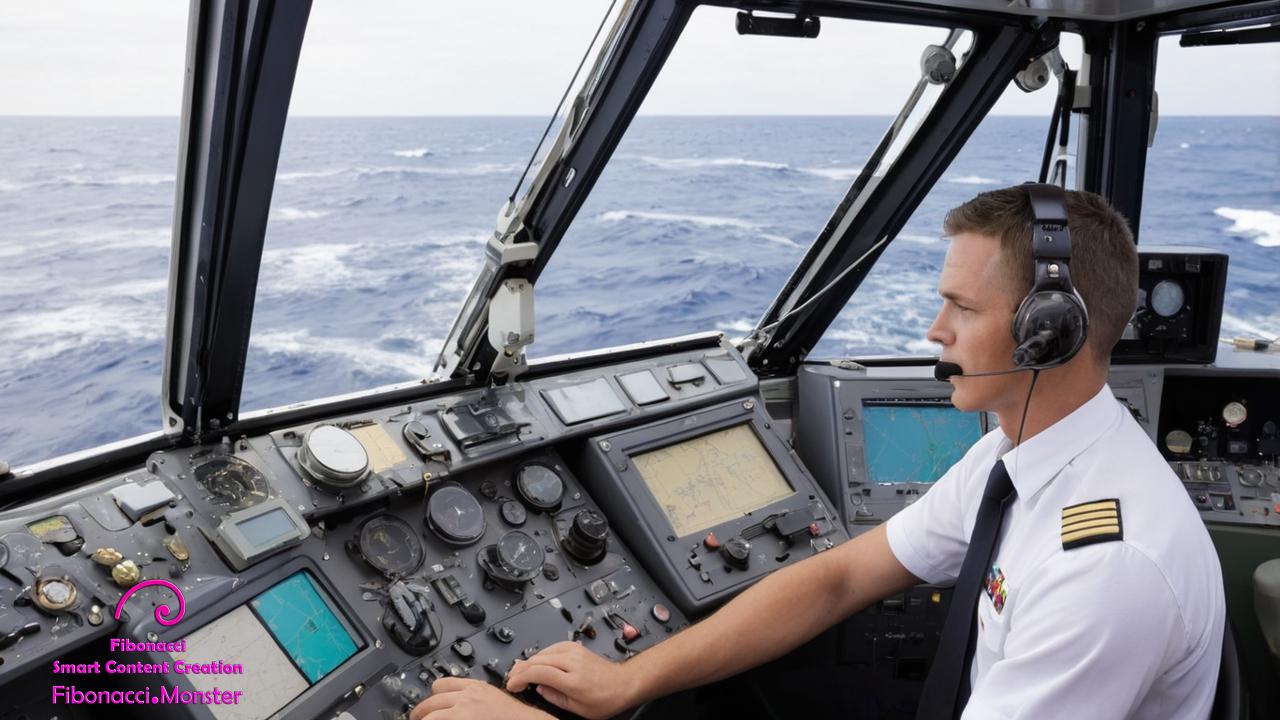
Understanding the Role of Marine Radios in Maritime Safety
Marine & Maritime Communication Solutions To appreciate the significance of modern marine radios, it is crucial to understand their role in maritime safety. These devices serve as the primary means of communication between vessels and shore stations, as well as among vessels themselves. In an environment where conditions can change rapidly, having reliable communication is vital for navigation, coordination, and emergency response.
Imagine a fishing boat navigating through foggy waters. The captain relies on their marine radio to communicate with nearby vessels and shore stations, ensuring safe passage and avoiding potential collisions. Marine & Maritime Communication Solutions Moreover, in emergency situations, the ability to relay distress signals can save lives and facilitate swift rescue operations. Have you ever considered how critical effective communication is in ensuring the safety of those at sea?
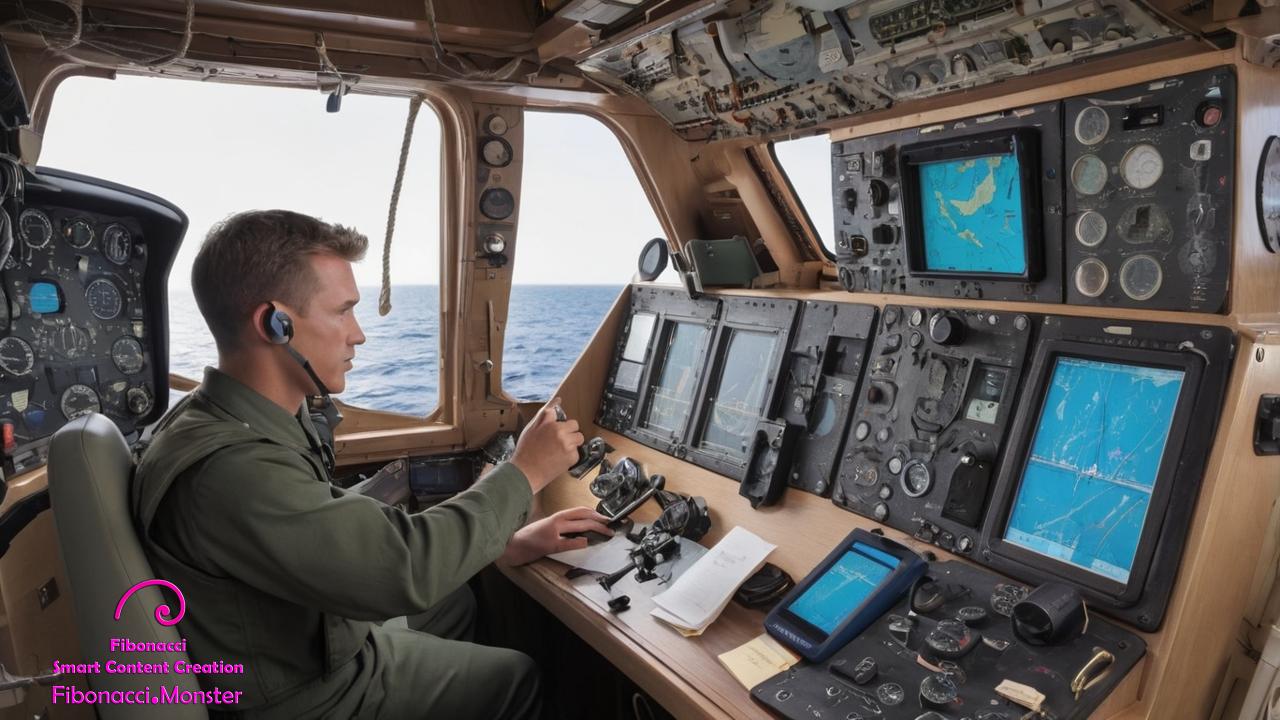
1. Enhanced Communication Range and Clarity
One of the most significant advancements in modern marine radios is their enhanced communication range and clarity. Traditional VHF radios had limitations in terms of distance and signal quality, Marine & Maritime Communication Solutions often resulting in static or dropped calls. However, modern marine radios utilize advanced technology to provide clear, reliable communication over greater distances.
For instance, many contemporary marine radios are equipped with Digital Selective Calling (DSC) capabilities, allowing users to send automated distress signals along with their vessel’s identification and location. This feature significantly improves the chances of a swift response from nearby vessels or coast stations. Imagine a scenario where a vessel is in distress; the ability to send a precise distress signal can expedite rescue efforts. How do you think enhanced communication capabilities can impact safety at sea?
2. Integration of Global Positioning System (GPS)
The integration of Global Positioning System (GPS) technology into modern marine radios has further enhanced their safety features. GPS allows vessels to determine their exact location, which is crucial for navigation and emergency response. Many marine radios now come with built-in GPS receivers, enabling users to transmit their location along with distress signals.
This feature is particularly valuable in emergencies, as it provides rescuers with accurate coordinates for swift assistance. For example, if a boat capsizes, the crew can activate their marine radio, sending out a distress signal that includes their precise location. This capability reduces the time it takes for rescue teams to reach the distressed vessel, ultimately saving lives. Have you thought about how GPS integration enhances the effectiveness of marine communication during emergencies?
3. Automatic Identification System (AIS)
The Automatic Identification System (AIS) is another crucial technology that has been integrated into modern marine radios. AIS is a tracking system that uses transponders to broadcast a vessel’s position, course, speed, and other relevant information to nearby vessels and shore stations. This information is displayed on electronic charts, allowing mariners to maintain situational awareness and avoid collisions.
AIS significantly enhances maritime safety by providing real-time information about nearby vessels. For instance, a commercial ship can monitor the movements of fishing boats and recreational vessels in its vicinity, enabling it to adjust its course accordingly. Additionally, AIS data is often shared with port authorities, improving traffic management and reducing the risk of accidents in busy shipping lanes. How do you think AIS technology contributes to safer navigation on the water?
4. Emergency Position Indicating Radio Beacons (EPIRBs)
Emergency Position Indicating Radio Beacons (EPIRBs) are essential safety devices that work in conjunction with marine radios to enhance safety at sea. EPIRBs are designed to automatically transmit distress signals to search and rescue satellites, providing accurate location information to facilitate rescue operations.
When activated, an EPIRB sends a signal that includes the vessel’s identification and location, allowing rescue services to respond quickly. This technology is vital for all types of vessels, from commercial ships to recreational boats. Imagine a scenario where a vessel is stranded in rough seas; the activation of an EPIRB can alert rescue teams, significantly increasing the chances of a successful recovery. Have you considered how EPIRBs enhance safety and response capabilities in maritime operations?
5. Digital Selective Calling (DSC) and Distress Alerts
Digital Selective Calling (DSC) is a significant advancement in marine communication technology that enhances the capabilities of traditional VHF radios. DSC allows users to send automated distress signals, alerts, and messages to other vessels and shore stations. This feature streamlines communication, ensuring that critical information is transmitted quickly and accurately.
When a vessel activates its DSC function, it sends a distress alert that includes its position and identification, allowing nearby ships and coast stations to respond promptly. This capability is particularly useful in emergencies, as it reduces the time needed to communicate distress situations. Picture a scenario where a vessel is taking on water; the ability to send an immediate DSC alert can expedite rescue efforts. How do you think DSC technology improves maritime safety and response times?
6. Weather Monitoring and Alerts
Weather conditions can have a profound impact on maritime operations, and having access to accurate weather information is essential for safe navigation. Modern marine radios often come equipped with weather monitoring capabilities, providing real-time updates on conditions such as wind speed, wave height, and storm activity.
These systems utilize satellite data and meteorological models to deliver comprehensive weather information. For instance, a fishing vessel can use this data to determine the best times to head out to sea, while a cargo ship can adjust its course to avoid severe weather. Having access to reliable weather forecasts can significantly enhance operational planning and safety. Have you considered how weather monitoring systems can influence decision-making in maritime operations?
7. Crew Communication and Coordination
Effective communication among crew members is essential for operational efficiency and safety on board vessels. Modern marine radios are designed to facilitate seamless communication within the crew, enabling them to coordinate actions and share information effectively.
Crew communication systems can include intercoms, private branch exchanges (PBXs), and wireless communication devices, allowing crew members to communicate effortlessly, whether they are on the bridge, in the engine room, or on deck. For example, a crew member in the engine room can quickly relay information about equipment status to the bridge, enabling timely decision-making. Imagine a scenario where crew members are well-coordinated and informed; this level of preparedness can significantly enhance operational success. How do you think effective crew communication can impact the overall performance of maritime operations?
8. Training and Familiarization with Equipment
While modern marine radios offer advanced capabilities, the effectiveness of these devices ultimately depends on the crew’s training and familiarity with the equipment. Proper training ensures that crew members understand how to operate the radios effectively, including how to use emergency features like DSC and EPIRBs.
Regular drills and training sessions can help crew members practice using communication equipment in various scenarios, reinforcing their knowledge and confidence. For instance, conducting drills that simulate emergency situations can prepare crew members to respond quickly and effectively when real emergencies arise. How important do you think ongoing training is in maximizing the safety benefits of modern marine radios?
9. Regulatory Compliance and Safety Standards
In the maritime industry, compliance with regulations and safety standards is paramount. Communication solutions must meet specific international and national standards to ensure safety and operational integrity. Organizations such as the International Maritime Organization (IMO) set guidelines for communication equipment, ensuring that vessels are equipped with the necessary tools to operate safely.
When selecting communication solutions, it is crucial to ensure that the equipment complies with these regulations. This includes adhering to standards for VHF radios, AIS systems, EPIRBs, and other communication technologies. Compliance not only enhances safety but also ensures that vessels can operate legally in international waters. Have you thought about how regulatory compliance impacts the selection of communication solutions in maritime operations?
10. The Future of Marine Communication Technology
As technology continues to advance, the future of marine communication solutions looks promising. Emerging trends such as the Internet of Things (IoT), artificial intelligence (AI), and enhanced satellite communication are set to revolutionize maritime operations. These innovations will enable vessels to communicate more effectively, share data in real-time, and enhance situational awareness.
For example, IoT devices can collect and transmit data from various sensors on board, providing valuable insights into vessel performance and environmental conditions. AI algorithms can analyze this data to optimize navigation routes and enhance safety protocols. Imagine a future where vessels are equipped with smart technology that continuously monitors conditions and communicates with other vessels and shore stations. How do you envision these advancements shaping the future of maritime safety?
Conclusion: The Critical Role of Modern Marine Radios in Safety at Sea
In conclusion, modern marine radios play a vital role in enhancing safety at sea. From improved communication range and clarity to the integration of GPS and AIS technologies, these devices provide essential tools for navigating the complexities of maritime operations. As technology continues to evolve, the capabilities of marine radios will expand, further improving safety and operational efficiency.
In an era where effective communication is more critical than ever, investing in reliable and advanced marine communication solutions is essential for all maritime operators. By embracing the latest technologies and prioritizing training, the maritime industry can enhance safety, improve response times, and ultimately save lives. Are you ready to explore how modern marine radios can transform safety in maritime operations? The future of marine communication is bright, and staying ahead of the curve is essential for success at sea.


